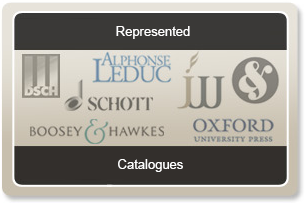News
Krzysztof Knittel’s ‘The Last Judgment’ – premiere 8 November
2017-11-03
The premiere of Krzysztof Knittel’s opera ‘Sąd ostateczny’ [The Last Judgment] is just a few days away. We invite you to the Baltic Opera on 8 November! The chorus, orchestra and ballet of the Baltic Opera in Gdańsk will be conducted by Szymon Morus. The soloists will be Robert Gierlach, Piotr Lempa, Jan Jakub Monowid, Anna Mikołajczyk and Magdalena Chmielecka.
Before the premiere, we can reveal a few things about the work:
‘For as long as a representation of Judgment Day exists, that day will be forever deferred’ – those are the words spoken by Tommaso Portinari to the artist Hans Memling in the first act of the opera when commissioning the triptych ‘The Last Judgment’. Despite its title, which brings apocalyptic visions to mind, Krzysztof Knittel’s opera does not depict the end of the world, but rather the tempestuous fortunes of the triptych, associated with Gdańsk. Act 1 presents the legendary background to the work – the artist’s conversion and the mysterious commission, in which dark forces had a hand. Act 2 shows the work wandering across Europe for several centuries, through Bruges, Gdańsk, Paris and Moscow until it returned to … Memling’s atelier.
Huge vocal-instrumental forces are deployed in this opera, including a mixed choir and a children’s choir, orchestral instruments, keyboard, electric guitar and electronics. One notes in particular the large percussion section, containing nearly every known percussion instrument, as well as such things as branches and paper. The percussion takes on special significance in the key scene depicting the work’s commission, when the texture becomes denser, rhythmic patterns are repeated and the element of improvisation appears, emphasising the anxiety and tension accompanying the speech made by Portinari – the embodiment of pure evil.
The large cast of characters in this story contains just one woman: Caterina Tanagli, wife of the donor, Angelo Tani. She is depicted on the reverse of a wing of the altarpiece. Consequently, the vocal layer of the work is dominated by male voices, although in a great variety of timbres: from bass to counter-tenor. The exception is Archangel Michael, who sings in mezzo-soprano, lent an extraordinary aura by that character’s leitmotiv: a melodic figure repeated in the strings. All the parts are based on melorecitation within a narrow compass. The composer also employs entirely spoken scenes, as if deliberately withholding the capacity to sing from the greatest criminals of the twentieth century: in scene 13 the SS men transporting the painting to Thuringia, and in scene 14 Stalin and his government officials. In the part of the inspired, prophetic chorus, meanwhile, a melody resembling Jewish song recurs several times.
The whole drama constitutes a gallery of pictures that are distant in time and space, as underscored by the musical setting, which changes in every scene. Passages full of restless glissandos and clusters, sounds both illustrative and concrete, are followed by more static or repetitive moments. The wealth of timbres and musical means of expression employed in ‘The Last Judgment’ matches the distinctness of the painting itself.











